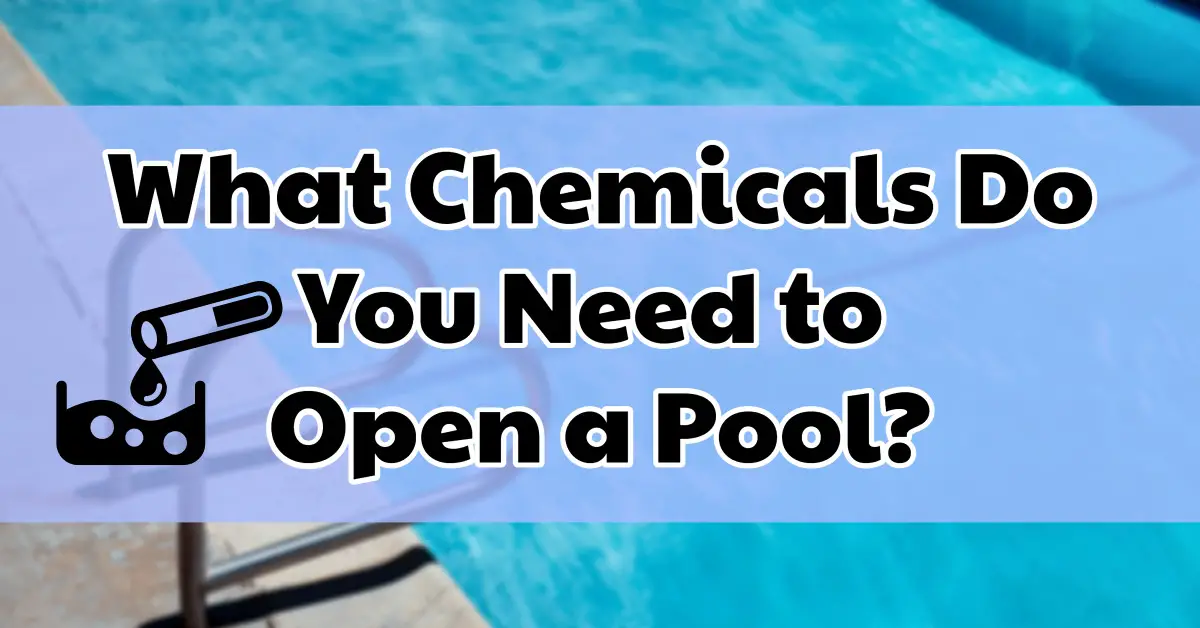What chemicals do you need to open a pool? This is the most common question for all pool owner. You’ll get all the required information about pool opening process. I will cover step by step process in this complete guide.
Let’s start..Now!
it’s time to get your pool ready for swimming season and that means, adding a dose of pool opening chemicals and adding the right chemicals that means preventing algae and cloudy pool water later.
luckily, All the chemicals you need to open your pool in the spring are the same ones you’ll need for regular pool maintenance throughout the year.
Here’s what you need to know about pool opening chemicals and how to add them?
Before you add any chemicals to your pool, make sure that you’ve completed the below steps.
5 Pool Opening Steps (Before Adding Any Chemicals)
- Remove the cover, drain plugs, winterization plugs, and ice compensators
- Inspect the pool filter system, pumps, return line and other areas for damage
- Refill your pool with water so that the water level is midway up the skimmer
- Clean up leaves and debris with a skimmer net
- Turn on the filter and let it run for 12 to 24 hours to circulate the water
Now, it’s time to test your water.
You won’t know what chemicals to add and if you don’t know what your water chemistry looks like. Test strips are a quick and easy way to test your levels.
Alternatively, you may want to run a water sample over to your local pool supply store this will give you a more accurate baseline. They can test for other things like metals in your water.
Test the Water Levels
When you test your water you’ll want to test for the following levels:
Once you know, what needs adjusting it’s time to start balancing your water with the right chemicals.
You may have seen pool opening or pool start-up chemical kits depending on your water test results.
You may not need everything that the kit comes with such as, algaecide or a metal sequestering so regardless of whether or not you buy a startup kit.
You’ll want to have the following chemicals for opening your pool and maintaining your pool throughout the season.
Required Pool Opening Chemicals
and as always, when adding chemicals be sure to have protective gear like gloves and goggles remember safety first.
Adjust Pool Water Chemistry
Now, it’s time to start balancing your water here’s the order we recommend adjusting your water chemistry.
- First, you want to adjust your alkalinity
alkalinity helps buffer and prevent fluctuations with ph so we want to adjust these levels first
if you need to raise your alkalinity you can use an alkalinity increaser or baking soda
if you add an alkalinity increaser you may also raise your ph
- Next, you want to adjust your ph if necessary
you can lower your ph with a ph decreaser or if you need to raise your ph you can use a ph increaser or soda ash
after you adjust your ph adjust your cyanuric acid or cya levels if needed this helps to stabilize the sanitizer you’ll add later to your pool
wait an hour or so with the filter system running and then re-test and adjust these levels before adding any more chemicals
- Next, we’re going to be shocking the pool,
But before you shock your pool a good brushing.
if your pool water is cloudy then you’ll want to double shock your pool and that means adding two pounds of chlorine shock for every 10,000 gallons of water
if you open up your pool to really green water you should read how to get rid of green algae
Let the shock work overnight with your filter system running, after your chlorine level has come down to the proper range add your chlorine or sanitizer.
I recommend adding chlorine pucks or tablets to a chlorinator or directly to your skimmer
- Finally, adjust your calcium hardness levels
Low levels of calcium hardness can do damage in the long run like eroding parts in your pool so, you can actually wait until the water is sanitized and balanced before adjusting your calcium hardness.
That’s it.
Hope, I got covered all the information about what chemicals do you need to open a pool.
